Jim Biddulph & Oliver Heath in Conversation
Over the past few years, there has been a steady rise in awareness of Biophilic Design principles and all their virtues. This has unfolded hand-in-hand with the term “wellbeing” going mainstream. The two are intertwined and offer designers guidance well beyond aesthetics and pure functionality alone. But will Biophilia only ever remain in the commercial office space, or can we expect to see (and enjoy) it occurring more regularly in other interior contexts?
Interior designer and broadcaster Oliver Heath has long been an advocate for Biophilic Design, even a pioneer, and his continued research and application of said principles makes him an ideal candidate to help understand the benefits of biophilia, as well as where we might find our design processes going in the near future.
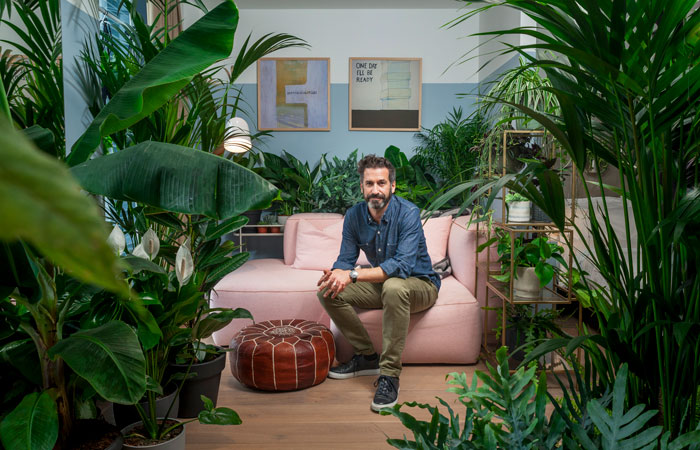
JB: How has biophilic design evolved since you began working with it and championing its principles?
OH: I first spoke publically about biophilic design six to seven years ago whilst appearing on the TV show DIY SOS. At the time there was a low level of awareness and it even took some design journalists by surprise. Since then my team has grown and the studio now has three main working strands. The first is research-driven; we carry out quantitative and qualitative studies around health and wellbeing in the built environment and share our findings and ideas in published white papers. We also put these ideas into practice through the application of biophilic design principles in interior environments. Alongside this is the dissemination of knowledge through talks and seminars that I undertake with sustainable flooring manufacturer Interface, of which I do around 60 per year across the UK and Europe.
This has helped to get the message across to the design world but in terms of the mainstream, it’s really since the release of TV programs such as Blue Planet 2 that we’ve seen a spike of interest in environmental concerns. That’s got people asking what they can do and for movements like those championed by the likes of Greta Thunberg to get off the ground. That’s really galvanised people’s thinking around how we can protect nature, have less of an individual impact, help to re-wild and restore the planet. With that comes the desire to connect to nature and to make our workplaces and homes healthier.
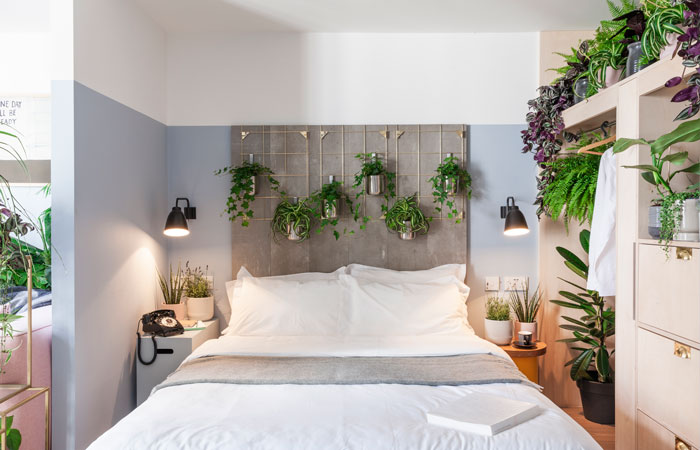
JB: Biophilic design has been widely discussed in the workplace sector, why do you think this is and how is it coming into effect?
OH: Workspaces and hospitality venues have so far been the areas of the interior market in which we’ve witnessed the largest uptake of biophilic design principles. There are a number of reasons for this, the first being that there has been a growing trend for making these spaces feel more residential – a home from home. But there is also a business case here too because improvements can be measured. We’ve seen a rise in understanding that by improving the experience of our places of work through the integration of biophilic design; staff retention and productivity go up. Essentially, companies are able to monetise the value of design. It’s the same in hospitality settings where it’s been found that guests will pay up to 23% more for a room with a wonderful view from their window. There has also been an upturn in the use of lobby spaces as comfortable and stylish places to meet, eat and drink without having to stay at the hotel, and this is largely owing to the application of biophilic design principles. The beauty of this is that not only can you create aspirational spaces for guests but also for staff, so such spaces have a positive impact on all who inhabit them.
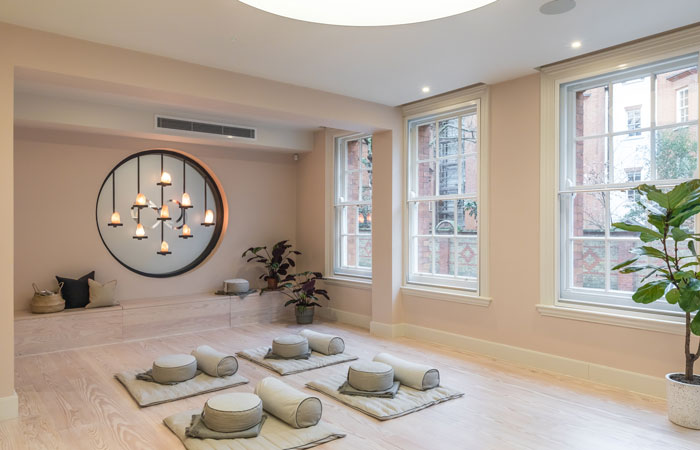
JB: So if it’s working there, can it do so in other sectors? Do you see it impacting upon other more problematic sectors such as healthcare?
OH: More recently there has been a surge of interest in utilising biophilia in the home, which may have come from awareness and appreciation that’s rubbed off from the experience of working environments that have been designed using biophilic design principles. The boom in popularity for houseplants and interior greenery may also be directly influenced by an increase in the rental market. Plants offer renters the autonomy to decorate and take more ownership of their home without making a permanent mark; they can take the plants with them if they move and continue to reap their benefits.
The healthcare sector is also a big focus for us, and we are seeing an increased commitment to improving patient experience through the introduction of outdoor courtyard spaces or ‘healing gardens.’ Offering in patients a view of such spaces from their room is something that we’re encouraging when planning healthcare developments. Award-winning spaces such as the Khoo Teck Puat Hospital in Singapore are shining examples of what can be done with biophilic design in healthcare settings and we are starting to see positive changes here, with the NHS in Shetland now acknowledging the healing power of connecting with nature by prescribing gardening as a remedy for anxiety and depression. Of course, infection control will always create restrictions when designing the interior spaces of hospitals; it’s very difficult to introduce plants for instance, but there is still a lot that can be done with biophilic colour, texture and imagery as well as the introduction of projection and moving image technology.
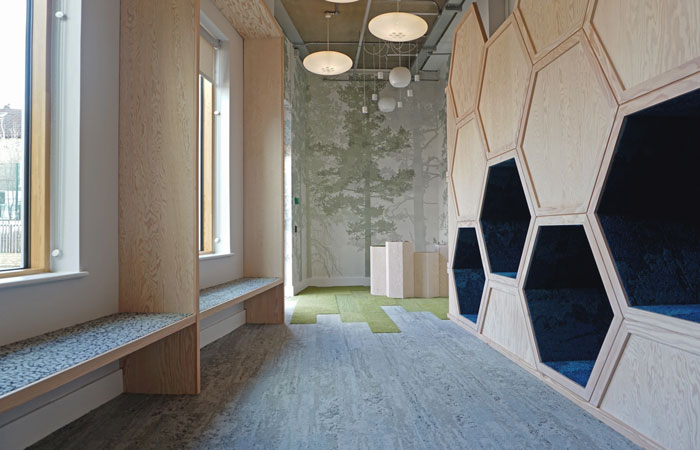
JB: I’d imagine that healthcare isn’t the only sector that might demand guaranteed ‘results’ though, is this something that you come up against?
OH: It’s true, we are still asked for “proof points” that validate the principles. In many ways it’s rather odd that we are so frequently asked for biophilic design to be measured in this way – can you name another design movement that was ever asked to measure it’s effectiveness? But it is a form of human-centric design and it can certainly be seen as a positive thing that evidence-based design is what people are asking for, because it means that we’re looking to draw upon positive experiences. Our ultimate aim is to create holistic solutions that incorporate better light and air quality, more plants and biophilic colours, materials and textures. Over the past year or so we’ve been carrying out the first study of its kind called the Biophilic Office Project. In conjunction with BRE, we’ve taken an existing and operating office building near Watford and carried out detailed quantitative and qualitative studies into how the building works and what impact it has upon those who frequent there. Taking the results of this study we aim to help guide design processes that will allow for happy and healthier spaces to work.
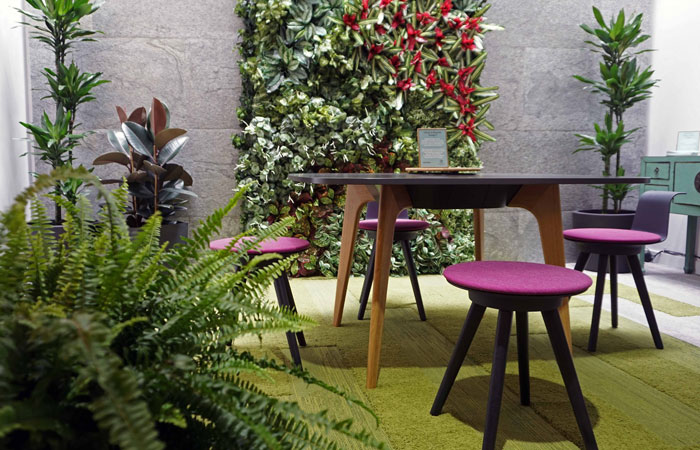
JB: Are you concerned that biophilic design might become pigeonholed as a ‘style’ of design rather than being fully embraced as a holistic approach to design?
OH: Style is traditionally associated with expressions of power, the self and wealth. The important thing about biophilic design is that it is about asking how spaces make people feel and improving them accordingly, rather than what a space looks like. Buildings can still be aspirational places but importantly, they should be restorative. Biophilic design is very much a balance of the sustainable and human-centred design. There are no one-size-fits all scenarios and each project must be carefully and individually considered; that’s what allows the design to be most successful.




